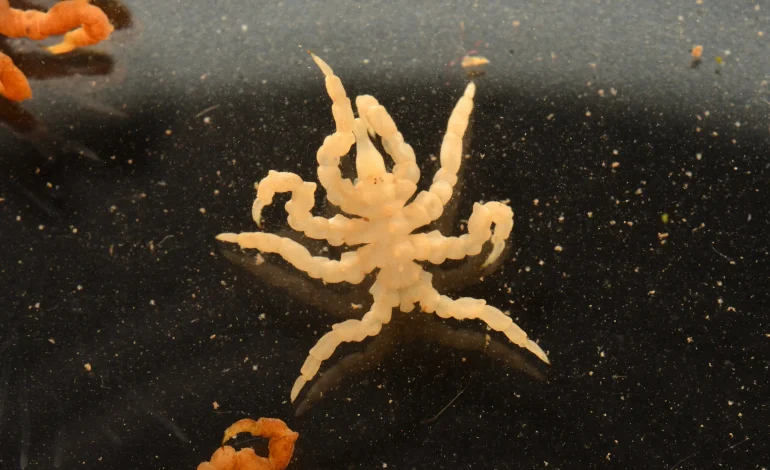A new genomic study may help solve a long-standing evolutionary mystery: why sea spiders lack abdomens and store their vital organs in their legs, the New York Times reports.
The findings, published in the journal BMC Biology, reveal that the absence of a key developmental gene may explain this striking anatomical difference between sea spiders and their land-based relatives.
Unlike terrestrial spiders, which possess distinct abdomens, sea spiders—marine arthropods found around the world—house their reproductive, digestive, and respiratory organs in their legs. This has puzzled scientists for years, prompting speculation about how such a unique body plan evolved.
Researchers led by Dr. Prashant Sharma of the University of Wisconsin-Madison have now sequenced the first complete genome of the knotty sea spider (Pycnogonum litorale), a species found in the Atlantic Ocean. Their work identified an unexpected absence: a Hox gene that typically guides the formation of abdominal segments in other arthropods.
“Hox genes” are critical in the animal kingdom, functioning as molecular blueprints that tell developing cells what body parts to form. Their presence or absence can have profound effects on an organism’s anatomy. In this case, the Hox gene associated with abdomen development—found in insects, crustaceans, and land-dwelling spiders—was completely missing in the sea spider genome.
“This is the first genome assembly that’s put together a whole Hox cluster for a sea spider,” Dr. Sharma said. “And it’s missing from the cluster.”
To study the species, Dr. Sharma worked with Dr. Georg Brenneis of the University of Vienna, who maintains a laboratory colony of knotty sea spiders. The team collected specimens from the North Sea and raised them under controlled conditions, feeding them carefully selected sea anemones. Their offspring provided the genetic material for analysis.
The discovery raises questions about the sequence of evolutionary events. Did the loss of the gene lead to the disappearance of the abdomen? Or had the abdomen become obsolete due to other environmental or biological factors, making the gene unnecessary?
“We don’t know what caused what,” said Dr. Antonis Rokas, an evolutionary biologist at Vanderbilt University who was not involved in the research.
However, he noted that the findings add to a growing body of evidence that gene loss can be just as important as gene gain in evolutionary development.
Understanding the evolutionary consequences of missing genes could provide deeper insight into how organisms adapt over time. One potential next step, researchers say, could be experimental: removing the same Hox gene in related arachnids to see whether abdominal segments fail to develop.










The latest news in your social feeds
Subscribe to our social media platforms to stay tuned